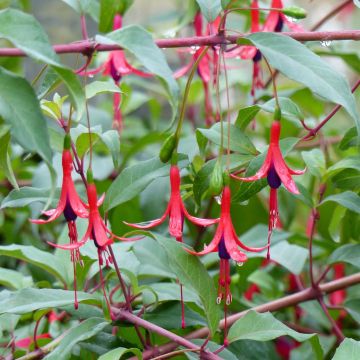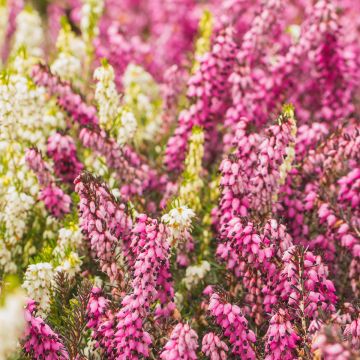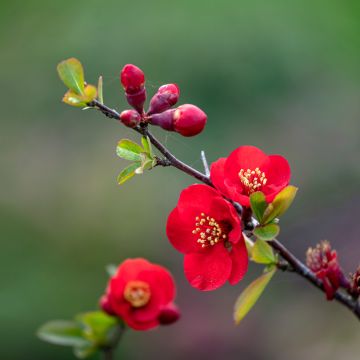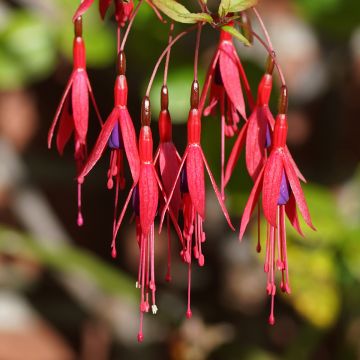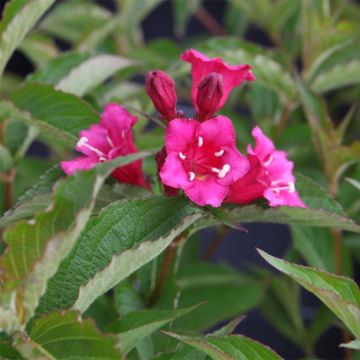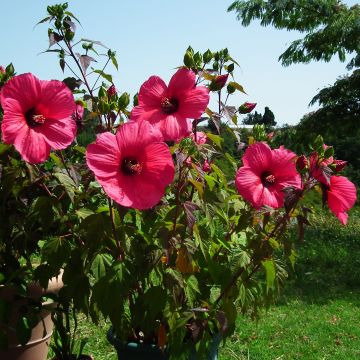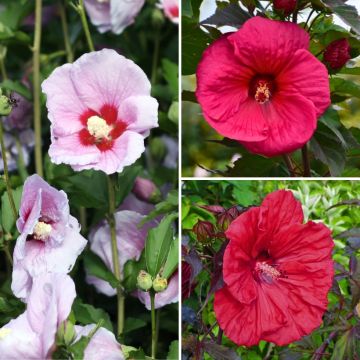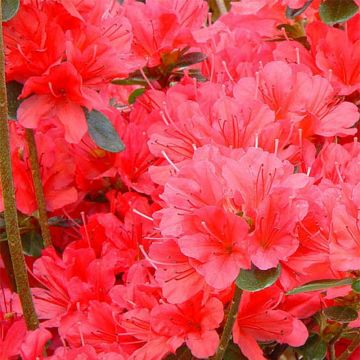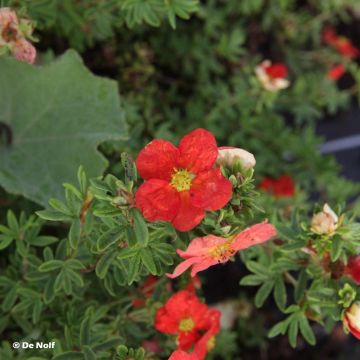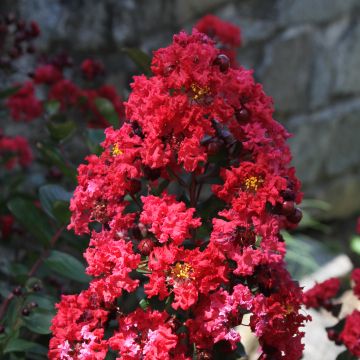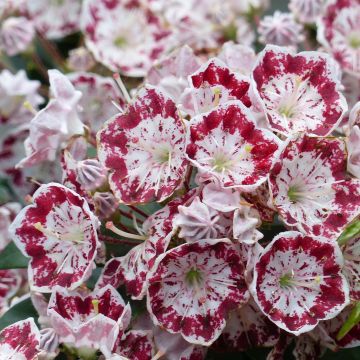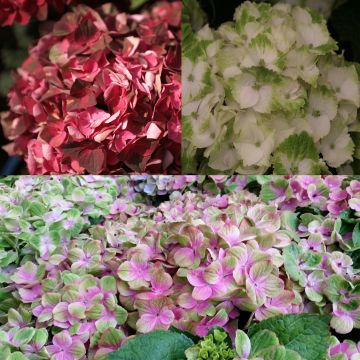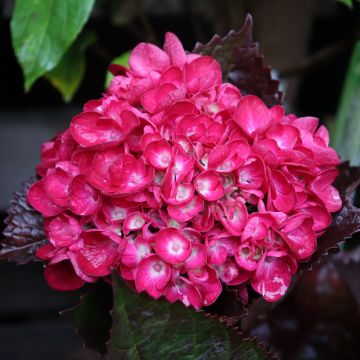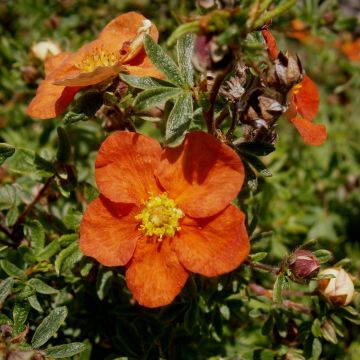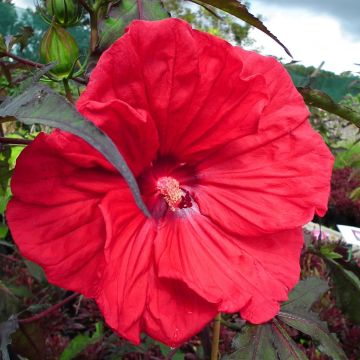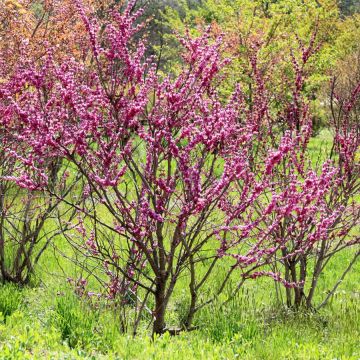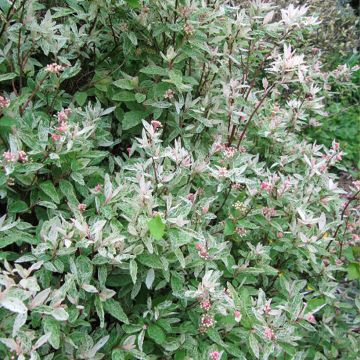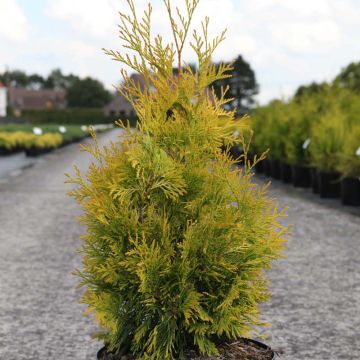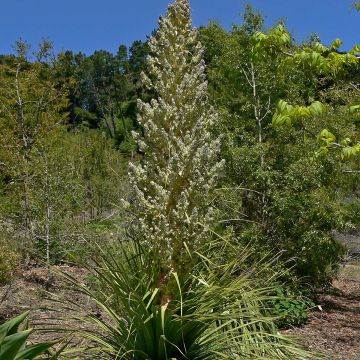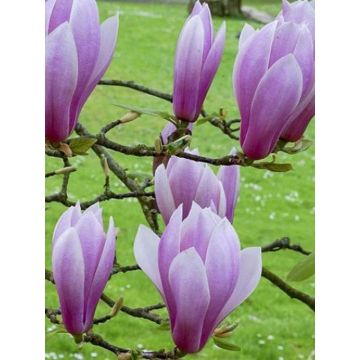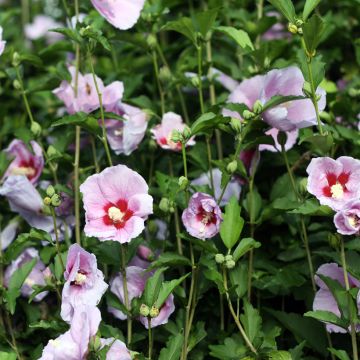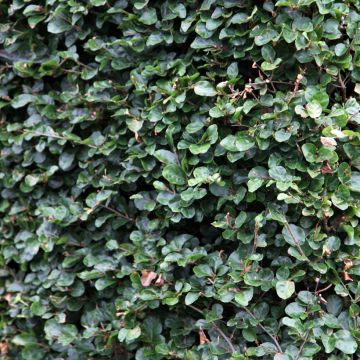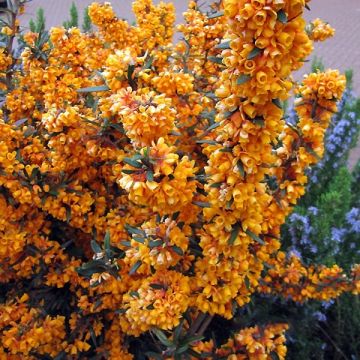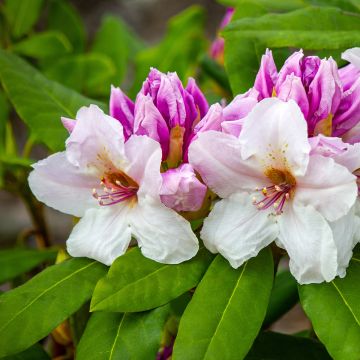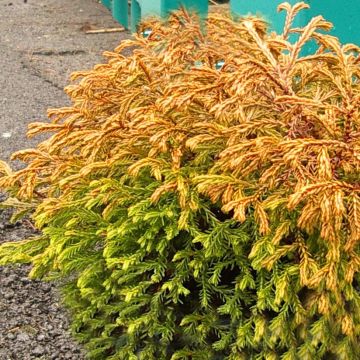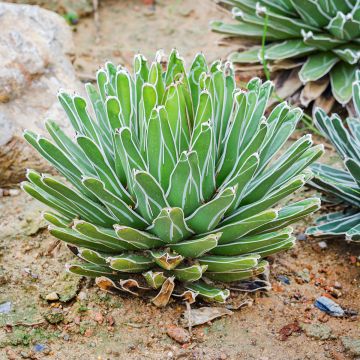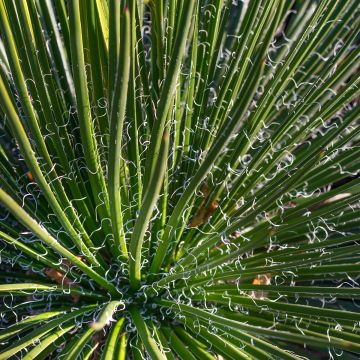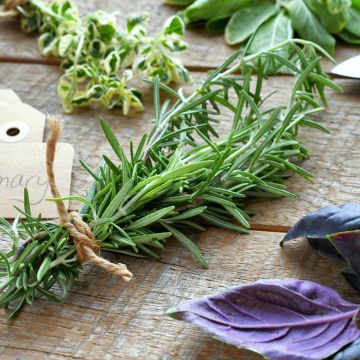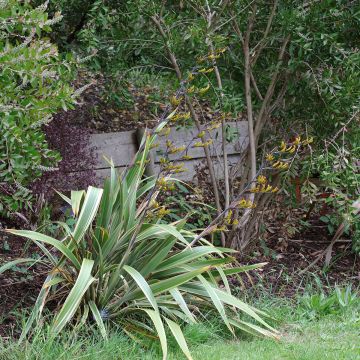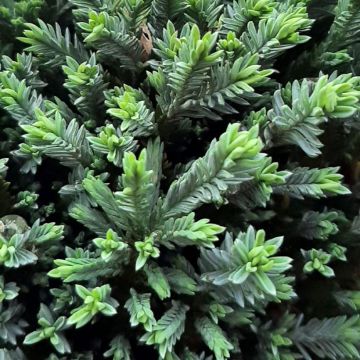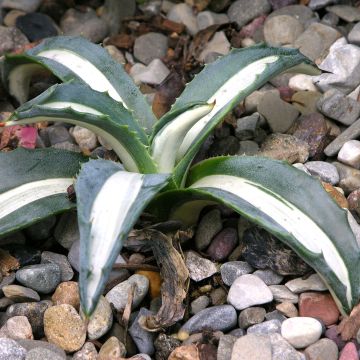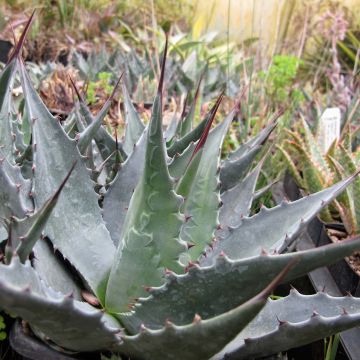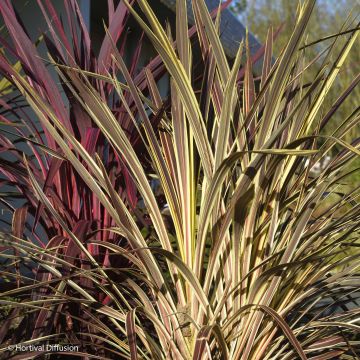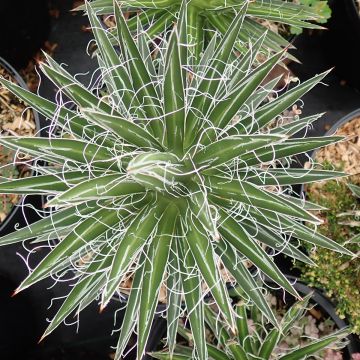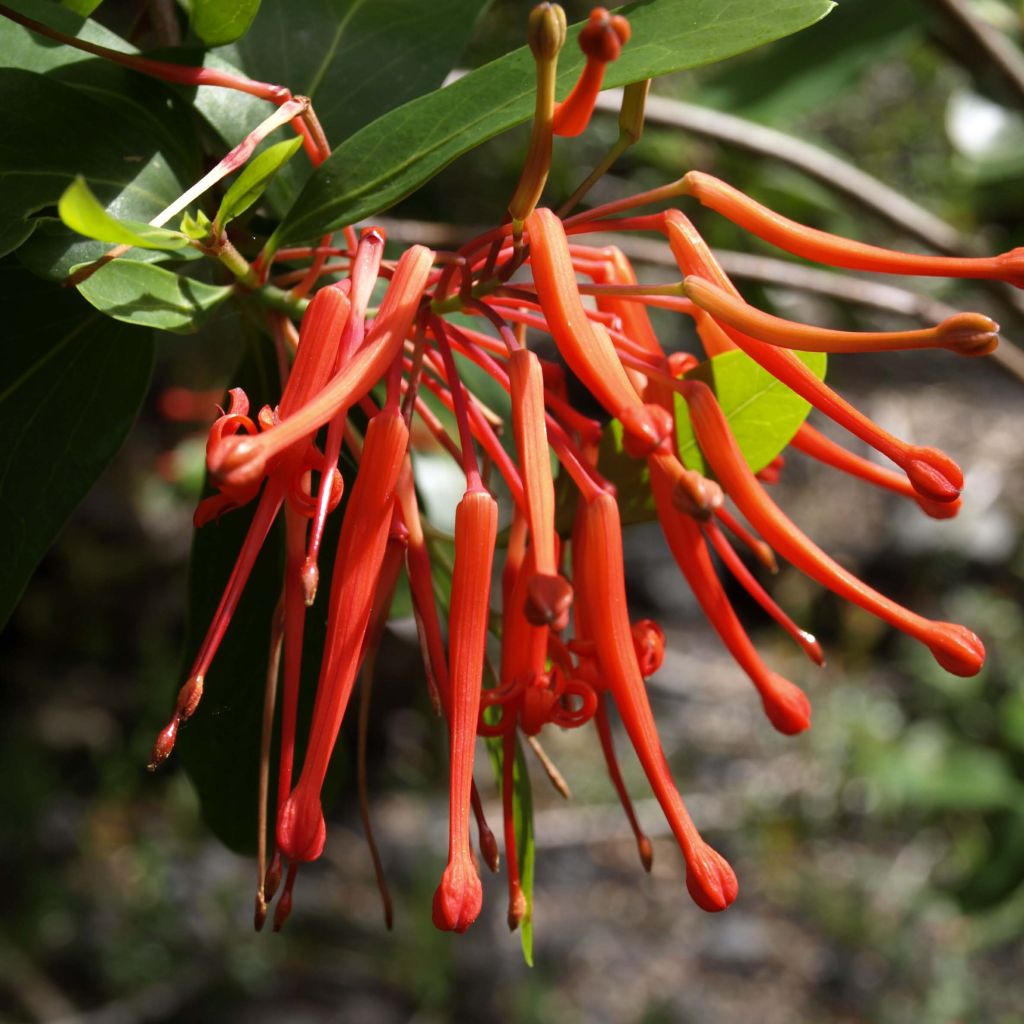

Embothrium coccineum Lanceolatum - Arbre de feu
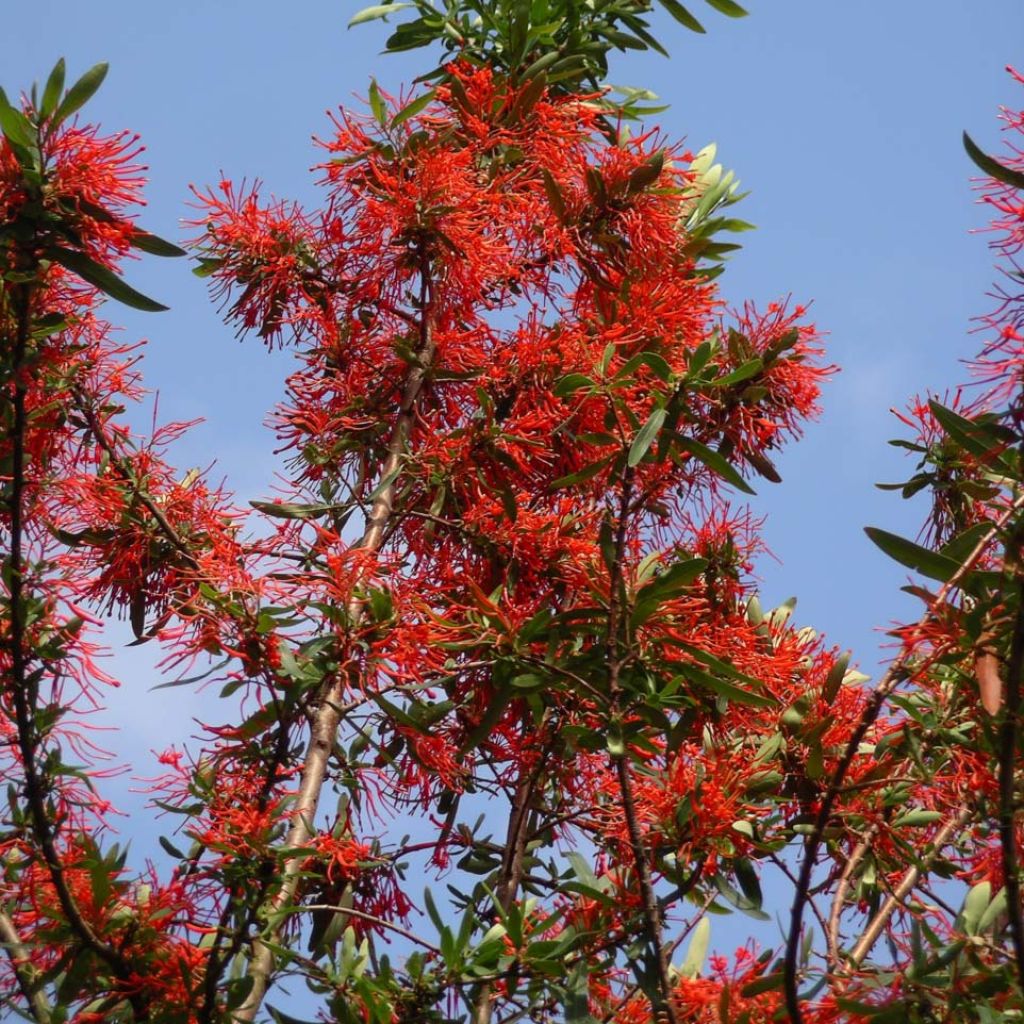

Embothrium coccineum Lanceolatum - Arbre de feu
Embothrium coccineum var. lanceolatum
Embothrium coccineum var. lanceolatum
Chilean Firebush, Chilean Flame Flower, Chilean Firetree, Flame Tree
Well-ramified plant with a strong root system. However, the plant was slightly mishandled during transportation. Unfortunately, this transport issue is recurring and not due to the sender...
Emmanuel D., 23/11/2018
Why not try an alternative variety in stock?
View all →This plant carries a 24 months recovery warranty
More information
We guarantee the quality of our plants for a full growing cycle, and will replace at our expense any plant that fails to recover under normal climatic and planting conditions.
From €5.90 for pickup delivery and €6.90 for home delivery
Express home delivery from €8.90.

Does this plant fit my garden?
Set up your Plantfit profile →
Description
Embothrium coccineum Lanceolatum Group is a little-known tree aptly named the Chilean Fire Tree or Chilean Fire Shrub. Is it because of its magnificent flowering, with an unstoppable fiery red, its ability to emerge from the ground after a fire, or its origins that border on the extreme south of Tierra del Fuego in Patagonia? In any case, it is a magnificent and rare small tree, adorned with elegant narrow and glossy foliage, and adorned in spring with an extraordinary flowering of large clusters of tubular, scarlet flowers. This plant is worth the effort: hardy down to -12°C (10.4 °F) in well-drained soil and sheltered exposure, it likes acidic, cool, light soils, and coastal mildness.
Embothrium coccineum belongs to the proteaceae family, widely represented in South African and Australian floras. This small tree is native to a vast area ranging from the southern half of Chile, from the coast to the limit of the mountains, to the extreme south of Tierra del Fuego in Patagonia, sometimes up to 2000 metres (6561 feet 8 inches) altitude. Capable of adapting to quite diverse habitats, this species is still restricted to poor, non-chalky, sandy or peaty and filtering soils, as well as rather humid and mild climates.
The cultivar named 'Lanceolatum Group' is actually considered a subspecies distinguished from the type by the narrowness of its leaves. This small tree has a bushy habit, both upright and spreading, with well-branched vegetation. It grows at a moderately fast rate, reaching an average height of 5.5 m (18 ft) with a spread of 2.20 m (7 ft 2 in). The stout trunk is covered with grey bark covered with lenticels that give the appearance of horizontal stripes. The upright, flexible branches, bear foliage with a bluish-green to dark green lustre. Each lanceolate leaf measures up to 12 cm (4.7 in) in length and 2 cm (0.8 in) in width, is smooth with slightly wavy edges and a clear central vein. Evergreen in mild climates, the leaves fall at -7°C (19.4 °F).
In May-June, flower clusters appear in the axils of the leaves, mostly towards the top of the tree. Each of these clusters, called a corymb, is composed of long tubular flowers measuring 3 to 5 cm (1.2 to 2 in) in length, carried by long peduncles. The flower consists of a tube ending in 4 lobes that twist at full bloom to release the pistil surrounded by 4 short and partially fused stamens. These scarlet-red flowers, sometimes tinged with yellow at their tips, are nectar-rich and attract certain species of hummingbirds in Chile that will pollinate them.
Particularly suited to mild coastal climates, one can admire some beautiful specimens of Embothrium coccineum Lanceolatum Group where it finds the mildness of winter and the summer humidity that allow it to flourish. This small tree deserves a place as a standalone specimen in a garden of modest size, but can also create a stir in a large shrub group if well accompanied: it will complement evergreen ceanothuses or the Jacaranda mimosifolia, an association as exotic as it is sumptuous. Its dazzling flowering will also be highlighted by the silver foliage of Eucalyptus or certain willows. In an exotic garden it can be associated with proteas, Canary viper's bugloss, Aloe aristata, Melianthus major or palm trees, as well as Callistemon and Leptospermum.
Report an error about the product description
Embothrium coccineum var. lanceolatum in pictures
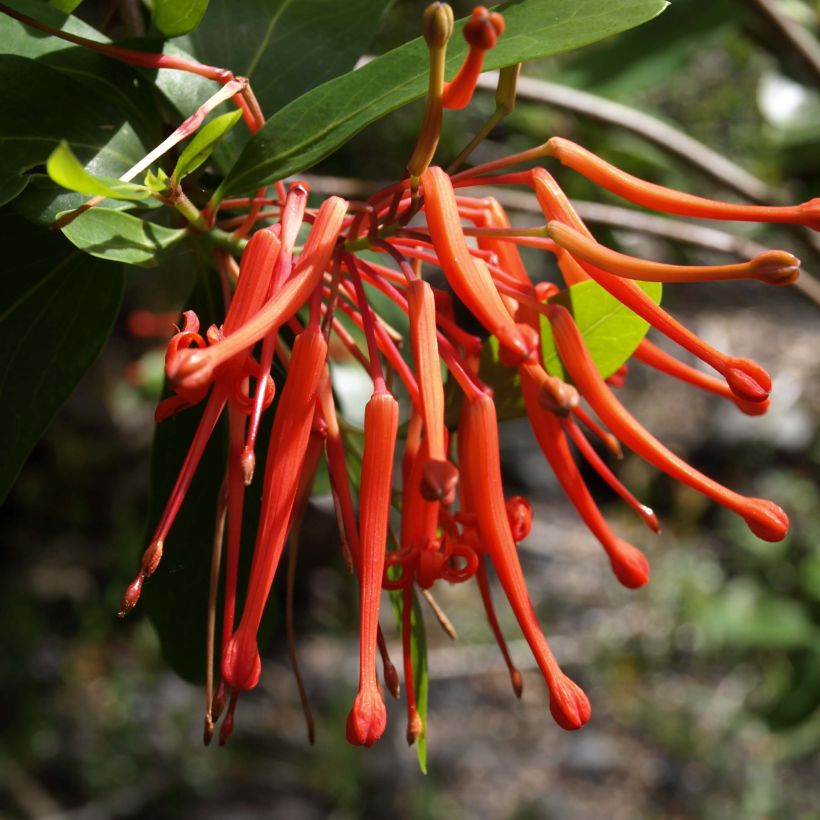

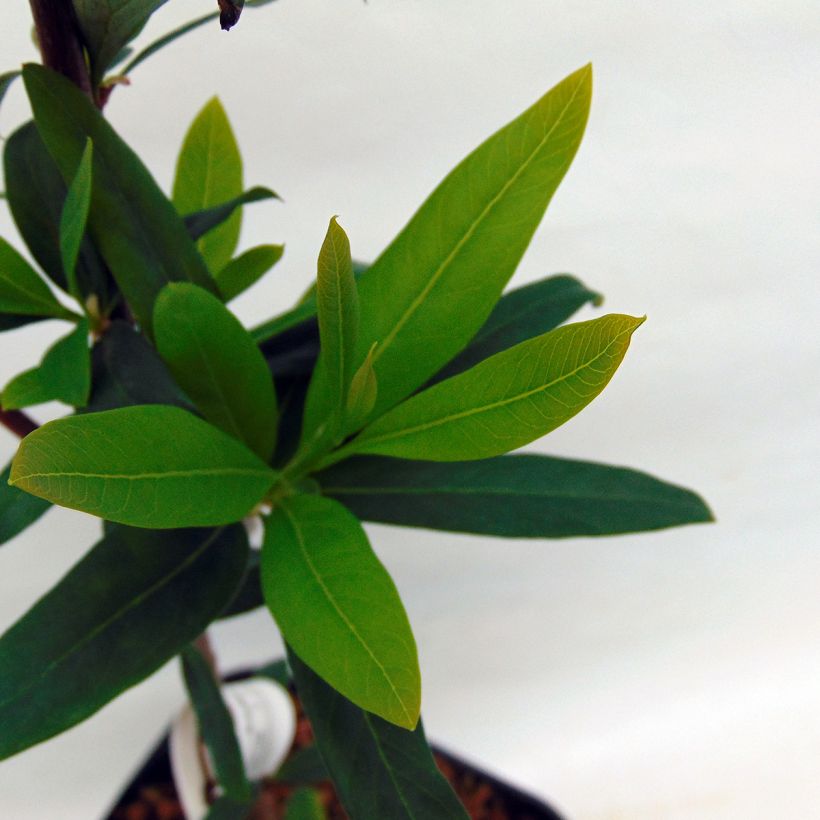

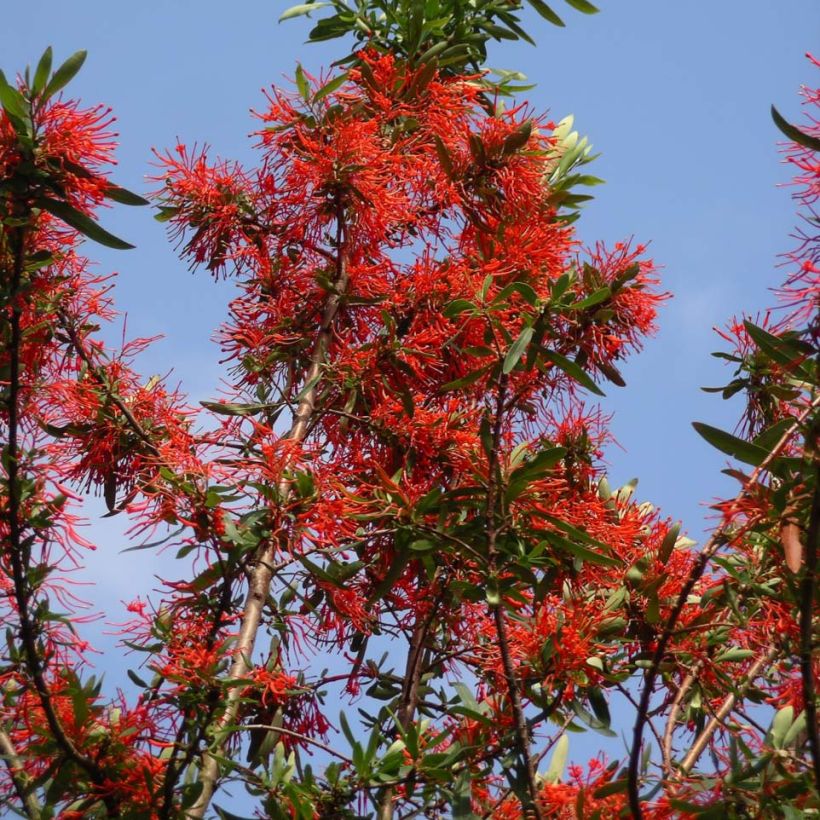

Plant habit
Flowering
Foliage
Botanical data
Embothrium
coccineum
var. lanceolatum
Proteaceae
Chilean Firebush, Chilean Flame Flower, Chilean Firetree, Flame Tree
South America
Other Shrubs A to Z
Planting and care
Embothrium coccineum is best planted in spring, after the last frost. It requires a deep, moist, acid to neutral pH, sandy, loamy, poor and well-drained soil. The presence of limestone in the soil causes yellowing of the foliage, chlorosis, which weakens the bush until it eventually dies. This condition can be corrected by regularly adding iron in chelated form. In regions where the soil and subsoil are limestone, it is best to dig a large pit, 60-80 cm (23.6-31.5 in) in all directions, then fill it with ericaceous soil and non-limestone sand. Growing in a container allows better control of the substrate and the ability to store the plant frost-free in areas with limited hardiness (down to -12°C (10.4 °F) for a well-established plant). In a container, use light, well-drained potting soil that remains moist. We recommend the following mix: 60% pine bark, 20% coarse river sand, 10% fine river sand, and 10% clay soil for its water retention capacity. The pH should be 6.5 or less. This tree dislikes hot and dry summers, so plant it in partial shade if summers are hot in your region, but in an open location elsewhere. Choose a spot sheltered from dry and cold winds. The proximity of a water source is appreciated, as long as the roots do not sit in waterlogged soil in winter.
Monitor watering during the first two summers and in pots throughout the cultivation. In the ground, it appreciates having a thick layer of mulch. Use wood chips or grass clippings. For feeding use a very low phosphorus fertilizer, as it can decrease the bush's resistance to drought by destroying the thick root hairs that develop just below the soil surface. A 18-2-10 N-P-K fertilizer is well-suited.
Pruning:
It is unnecessary to prune the Chilean fire tree, just remove dead wood.
Insects and diseases:
Mites, particularly red spiders, colonize the foliage when the air is too dry. In hot and dry weather, spray the foliage in the evening.
Planting period
Intended location
Care
-
, onOrder confirmed
Reply from on Promesse de fleurs
Evergreen shrubs
Haven't found what you were looking for?
Hardiness is the lowest winter temperature a plant can endure without suffering serious damage or even dying. However, hardiness is affected by location (a sheltered area, such as a patio), protection (winter cover) and soil type (hardiness is improved by well-drained soil).

Photo Sharing Terms & Conditions
In order to encourage gardeners to interact and share their experiences, Promesse de fleurs offers various media enabling content to be uploaded onto its Site - in particular via the ‘Photo sharing’ module.
The User agrees to refrain from:
- Posting any content that is illegal, prejudicial, insulting, racist, inciteful to hatred, revisionist, contrary to public decency, that infringes on privacy or on the privacy rights of third parties, in particular the publicity rights of persons and goods, intellectual property rights, or the right to privacy.
- Submitting content on behalf of a third party;
- Impersonate the identity of a third party and/or publish any personal information about a third party;
In general, the User undertakes to refrain from any unethical behaviour.
All Content (in particular text, comments, files, images, photos, videos, creative works, etc.), which may be subject to property or intellectual property rights, image or other private rights, shall remain the property of the User, subject to the limited rights granted by the terms of the licence granted by Promesse de fleurs as stated below. Users are at liberty to publish or not to publish such Content on the Site, notably via the ‘Photo Sharing’ facility, and accept that this Content shall be made public and freely accessible, notably on the Internet.
Users further acknowledge, undertake to have ,and guarantee that they hold all necessary rights and permissions to publish such material on the Site, in particular with regard to the legislation in force pertaining to any privacy, property, intellectual property, image, or contractual rights, or rights of any other nature. By publishing such Content on the Site, Users acknowledge accepting full liability as publishers of the Content within the meaning of the law, and grant Promesse de fleurs, free of charge, an inclusive, worldwide licence for the said Content for the entire duration of its publication, including all reproduction, representation, up/downloading, displaying, performing, transmission, and storage rights.
Users also grant permission for their name to be linked to the Content and accept that this link may not always be made available.
By engaging in posting material, Users consent to their Content becoming automatically accessible on the Internet, in particular on other sites and/or blogs and/or web pages of the Promesse de fleurs site, including in particular social pages and the Promesse de fleurs catalogue.
Users may secure the removal of entrusted content free of charge by issuing a simple request via our contact form.
The flowering period indicated on our website applies to countries and regions located in USDA zone 8 (France, the United Kingdom, Ireland, the Netherlands, etc.)
It will vary according to where you live:
- In zones 9 to 10 (Italy, Spain, Greece, etc.), flowering will occur about 2 to 4 weeks earlier.
- In zones 6 to 7 (Germany, Poland, Slovenia, and lower mountainous regions), flowering will be delayed by 2 to 3 weeks.
- In zone 5 (Central Europe, Scandinavia), blooming will be delayed by 3 to 5 weeks.
In temperate climates, pruning of spring-flowering shrubs (forsythia, spireas, etc.) should be done just after flowering.
Pruning of summer-flowering shrubs (Indian Lilac, Perovskia, etc.) can be done in winter or spring.
In cold regions as well as with frost-sensitive plants, avoid pruning too early when severe frosts may still occur.
The planting period indicated on our website applies to countries and regions located in USDA zone 8 (France, United Kingdom, Ireland, Netherlands).
It will vary according to where you live:
- In Mediterranean zones (Marseille, Madrid, Milan, etc.), autumn and winter are the best planting periods.
- In continental zones (Strasbourg, Munich, Vienna, etc.), delay planting by 2 to 3 weeks in spring and bring it forward by 2 to 4 weeks in autumn.
- In mountainous regions (the Alps, Pyrenees, Carpathians, etc.), it is best to plant in late spring (May-June) or late summer (August-September).
The harvesting period indicated on our website applies to countries and regions in USDA zone 8 (France, England, Ireland, the Netherlands).
In colder areas (Scandinavia, Poland, Austria...) fruit and vegetable harvests are likely to be delayed by 3-4 weeks.
In warmer areas (Italy, Spain, Greece, etc.), harvesting will probably take place earlier, depending on weather conditions.
The sowing periods indicated on our website apply to countries and regions within USDA Zone 8 (France, UK, Ireland, Netherlands).
In colder areas (Scandinavia, Poland, Austria...), delay any outdoor sowing by 3-4 weeks, or sow under glass.
In warmer climes (Italy, Spain, Greece, etc.), bring outdoor sowing forward by a few weeks.

































